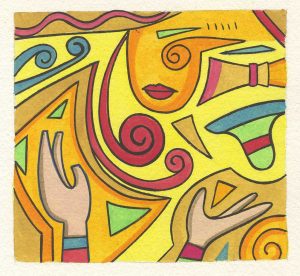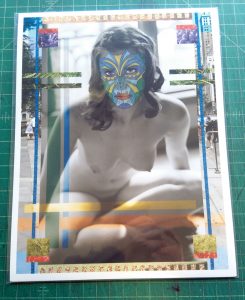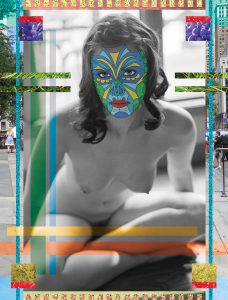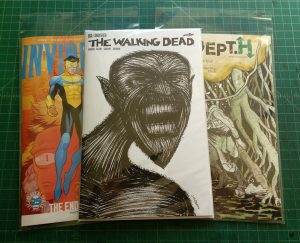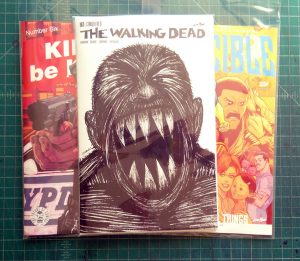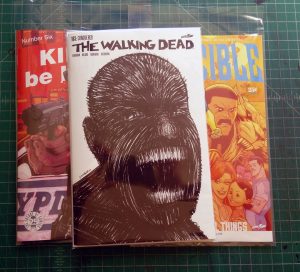
Over the years I’ve done all my own bicycle repairs. It’s not hard. All you need are tools and simple mechanical skills. Not everybody has mechanical skills but you don’t need very sophisticated ones for fixing or maintaining a bike. I’ve fixed and changed most bike parts: brakes, derailleurs, cables, gears, cranks, tires, tubes, and seats. The one thing I had never done before now is to change a wheel spoke.
Mechanically changing a wheel spoke isn’t hard. It’s just a stiff piece of wire that gets put through an eye at the center of the wheel and then connects to the rim by what they call a threaded nipple. You can go on YouTube and see lots of videos of people showing you how to do it. That’s not the problem I ran into with changing a spoke. The problem I ran into was that I have no new spokes sitting around the place. Who does?
What the spokes on a bike do is keep the tire rim true. There should be equal tension on all the spokes and then the wheel will be straight. Without that equal tension the wheel will wobble a little bit left and right. The more spokes that are out of tension or broken the bigger the wobble. It’s not easy truing a bike wheel. It takes experience. I’ve seen it done and have attempted it but my efforts didn’t make the wheel any straighter. Figuring out which spoke to tighten is a mystery to me.
So how does a person even break a spoke on a bike wheel? That’s easy. You don’t even have to do anything. They’ll just break of their own accord eventually. This time I was just pulling away from the curb when I heard that distinctive “Boing” sound of a thin piece of metal under tension breaking. I had leaned forward to pedal and put my weight over the front wheel when the spoke couldn’t take it anymore. Boing. Crap.
I’ve tried to replace spokes before. As I wrote I have no new spokes but what I do have is old wheels. I figured they have lots of good spokes still on them so if I take one of those off the old wheel I can put it on my current one. That was the plan but it didn’t work out very well. Y’see I ride my bike all through the winter and all through the weather. That means my bike gets full of road sand, salt, and water. That’s not good for a lot of bike parts and that includes the spokes. Not that the spokes get rotted or anything but they do get stuck in place. The threaded nipples get fused in place by grime.
One of the tools you need for a bike is a spoke wrench. It’s a little circular tool with small wrench sizes all around the circumference. You find the right size, fit it around the part of the nipple that sticks through the rim, and twist to tighten or loosen the spoke. The problem is that if the threads are frozen in place what happens if that if the spoke twists it can break. That’s what happened to me a few years ago. I must have broken three spokes trying to get them out. Eventually I gave up and bought a new rim. I think I had a few spokes missing from that old rim anyway so it was good that I replaced it. I was never going to get that rim anywhere near true with that many spokes to be replaced.
So I made up my mind to try it again this time. I pulled out another old wheel to see if I could get a spoke off. I decided to have a go at it from the top end of the spoke where there is a slot for a screw driver. Even holding the nipple in place with the wrench as I tried turning the screw driver achieved nothing. All I did was strip a few screws and nipple bolts. But at least I didn’t break the spokes this time. After half an hour of frustration I decided to give up. But first one last thing.
It was WD40 penetrating lubricant to my rescue. Before I left the wheel alone I sprayed some WD40 onto the spokes and into the little well in the rim where the nipple sat. Sometimes WD40 can loosen stuck things up and this time it did. I went back to the wheel the next day and lo and behold I could loosed the nipple off the spoke and pull it out of the whole wheel. Success!
I knew I’d have no trouble getting the broke one out of my good wheel because the end was broken off. The threaded nipple doesn’t clamp the spoke to the wheel in any way. It just creates tension on the spoke. The tension on the top and bottom of the spoke hold it in place. When the spoke breaks on the bottom the tension is released and it’s just a matter of pulling the broken spoke up through the rim. Nipple, spoke, and all. I was going to reuse the spoke nipple from the broken spoke since the replacement spoke nipple was a different color but then I thought again. The spoke nipple was frozen on to the spoke with plenty of road grime. No need to waste time and WD40 trying to get it off if I already had a good one. So now one of my spoke nipples is shiny instead of black but I don’t care.
Even with the replacement spoke my bike wheel is still not back to true. I tightened up the new spoke and that made it a little truer but it’s going to take even more adjustments to get it back to true. Adjustments I’ll probably never make because I don’t have the skills. But I’m happy It won’t fall any farther away from true now that it has its full complement of spokes. That “Boing” sound is really annoying to hear.
